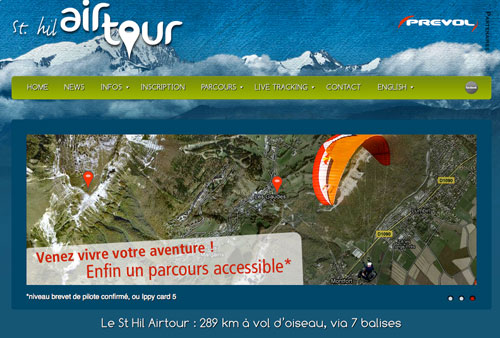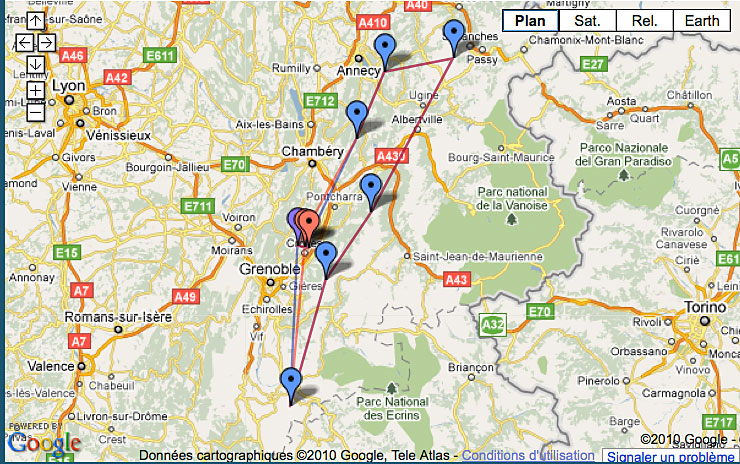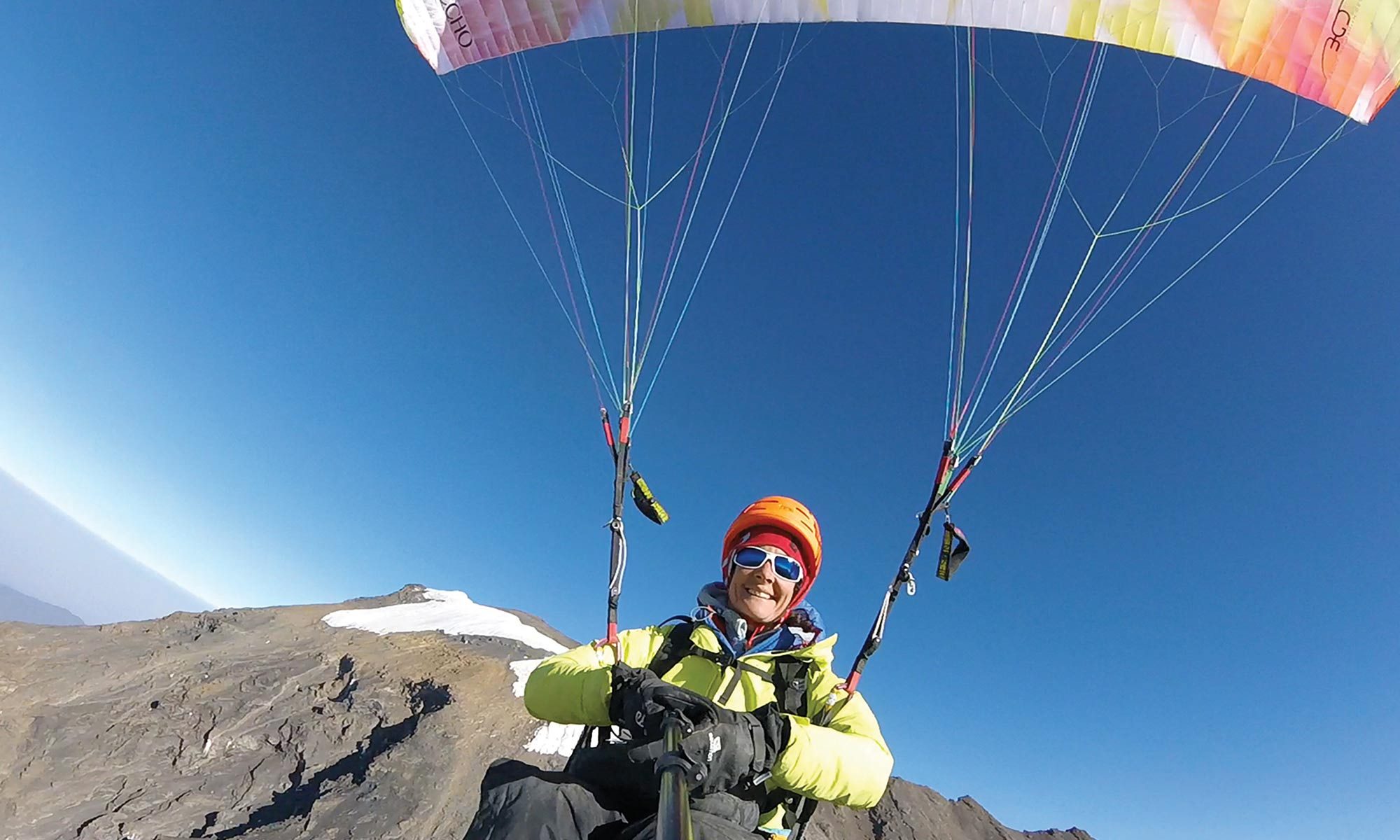
The St Hil’Airtour is a 289km race by foot or paraglider around a circuit of seven turnpoints in the French Alps that stretches from Grenoble to Annecy, and which pilots have six days to complete, starting on 21 June. I’m one of 46 teams (43 solo and three tandems) to be taking part this year.
It starts in France’s paragliding mecca of St Hilaire du Touvet, home of the famous Coupe Icare festival, and is organised by the local flying school there, Prevol. Pilots are allowed to progress on foot between the hours of 6am and 9pm, and fly between 6:30am and 8:30pm, but must stop at night.
The route for this year is below:

If it’s not flyable and the competitors have to walk, they must carry their paragliding equipment: glider, harness, reserve and helmet, plus a GPS and a tracking device. The tracking device sends regular signals back to a computer, and each athlete’s progress is plotted on a map for friends and armchair spectators to watch the action, almost as it happens.
With water and spare clothing the kit weighs around 10-15kg. There is some very specialist equipment out there now, much of it thanks to the AirTour’s inspiration, the Red Bull X-Alps. This 864km hike-and-fly race is extremely tough. It goes all the way across the Alps, from Salzburg to Monaco. It happens every two years, and the fifth event starts this July. It has become very prestigious, attracts the top pilots and endurance athletes from all over the world, and has prompted the research and production of some very lightweight high-performance paragliders and harnesses, that are built to go the distance. Most of the Airtour pilots won’t have such specialist kit.
My normal wing, which is what I’ll be using in the Airtour, is a lightweight Ozone Swift, weighing only 3.6kg. Its safety rating is EN B, on a scale which goes from A (beginner’s wing) to D, with serious distance competitors in the World Cup and the like flying uncertified, very high performance wings.
According to Airtour statistics, pilots on such lightweight, lower performance wings are in the minority; most competitors are using higher-performance but standard-weight wings, but saving weight by using reversible rucksack / harnesses, as I am with the Swing Connect reverse. If the weather is good and flyable, they should have the advantage, but will have more to carry of it rains and we end up walking a lot.
Each pilot has an assistant to help them, who has the thankless task of providing food, a battery charging service, weather forecasts and dinner, as well as being the unfortunate recipient of the athlete’s vented frustrations after a hard day’s slog. Or, in the rose-tinted vision of my mind’s eye, someone to share a chilled beer with after a great day outdoors.
My assistant is going to be my husband, Marcus, and I know he’ll be fantastic at it. He’s a good cross country pilot and will give be able to offer advice on takeoffs and routes, adapted to the weather forecast. He’s also a techno-expert, so I can happily leave him to plug in the array of electronic devices into the right sockets and get them charged up. And he knows my weaknesses, like my lack of a sense of direction. He knows that if I appear to be going the wrong way, then it’s because I am, and hopefully he’ll be able to tell me straight away!
So, the countdown is on to 21 June, and there is plenty of preparation to do before then!
Read more about the Airtour on Cross Country magazine’s website.


Good luck Charlie if we can help just call D&R